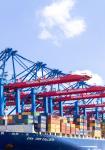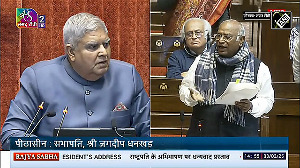If investment continues to be buoyant and efficiency improves, the problems of overheating may turn out to be less real and more imaginary, the mid-year review of the Indian economy said on Tuesday.
In a pointed reference to China's growth and similar concerns of overheating, the review said the Chinese economy continued to grow at an annual average rate of 9.1 per cent between 1995 and 2004.
Putting in perspective the problem of inflation and the concerns over the overheating of the Indian economy, the mid-year review said that a durable solution to the price rise problem has to be found in increasing yields and domestic output of products such as wheat and pulses.
Simultaneously, the macroeconomic policy response has to be prospective rather than retrospective, it added.
"A tightening, for example, will have to be in response to an inflationary problem anticipated in the future, not an inflationary bout that has already taken place".
A combination of high economic growth (GDP growth in the first half stood at 9.1 per cent) and a slow creeping up of inflation (the average of the first 52 weeks ending around November 18 stood at 4.66 per cent) has generated concerns about the economy overheating.
The government and the RBI have already initiated measures such as supply management, duty reduction and monetary tightening to bring inflation under control. The recent moderation of international oil prices have brought some relief.
The review added that the issue of overheating is related to the fundamental question of whether the country was growing beyond its growth potential, thereby straining labour force and capital stock, endangering inflationary instabilities.
"While growth in recent times has been even higher in China than in India, the current account surplus in China compared to a current account deficit in India, and the lower inflation in China than in India have been adduced as reasons why India may be more prone to overheating than China," the review adds.
As far as India is concerned, the review said that while it is difficult to be definitive about the sustainable level of the current account deficit ($ 6.1 billion in first quarter 2006-07), "it seems unlikely that the current level of such deficit is a cause for alarm".
The buoyancy in the economy has been amply supported by a vibrant external sector that saw engineering goods emerging as the biggest foreign exchange earner, as exports grew by a healthy 34.9 per cent in the first seven months of this fiscal to $ 69.5 billion.
On the import front, however, high crude prices played spoil sport. Imports were up 33 per cent in first seven months of this fiscal at $ 99.8 billion. In the first six months of 2006-07, crude oil imports were up 38.5 per cent to $ 29 billion dollars.
The ballooning imports led to the trade deficit surging to $ 18.5 billion in the first quarter.







 © 2025
© 2025